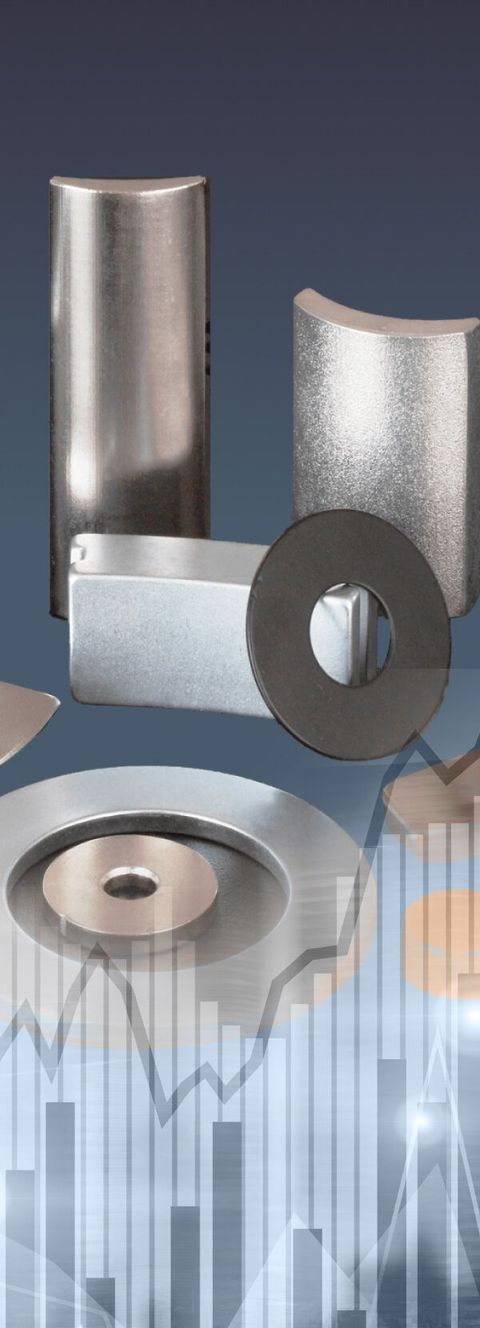How to Invest in Critical Metals
What are critical metals? And which ones should savvy investors focus on? Our overview of the space answers those questions and more.

Critical metals investing can be profitable, but getting into the space is tricky, especially for those more familiar with precious metals like gold and silver, or even base metals like copper.
It's therefore crucial for those interested in critical metals to start by doing some research. For one thing, it's key to be aware of what exactly critical metals are.
Interestingly, finding a definition is easier said than done — while organizations like the European Commission have laid out which metals and minerals they deem critical, there is no definitive list.
That said, the general consensus is that critical metals are metals that have become essential to daily life, but are hard to obtain or are particularly vulnerable to supply disruptions.
For example, critical metals can be difficult or expensive to extract; they can also be hard to substitute or may be found in only a few countries. They often have high-tech applications or strategic importance.
To help prospective critical metals investors get a handle on the space, we've put together a brief overview of some of the critical metals that are currently getting the most buzz. Rare earth elements are at the top of the list, but manganese, tantalum and several others are also covered.
How to invest in critical metals: Options to choose from
Rare earths are one of the most familiar critical metals groups, especially for investors who remember the rare earths price spike that happened in 2010 and 2011. Interest has since experienced peaks and troughs, but some still believe the metals are a compelling investment.
The rare earth elements group is made up of 15 lanthanides, plus yttrium and scandium, and each has different applications, pricing and supply and demand dynamics. China accounts for the vast majority of the world’s rare earths production, although other countries are attempting to step up.
Manganese, another critical metal, is currently attracting some attention due to its up-and-coming applications in the lithium-ion battery sector. However, about 90 percent of global manganese production is consumed by the steel sector, where it improves strength, toughness and stiffness.
Magnesium is known for its wide range of high-technology applications, with over 80 percent of global production coming from China. Tungsten and tantalum are both conflict minerals, meaning that many of the smaller companies exploring for these metals are focused on finding deposits in safe, secure places. China dominates the tungsten market, and tantalum is a key component in capacitors, with only a few mines solely dedicated to production of the metal.
Those interested in investing in very rare critical metals also have options. Scandium is one critical metal that is currently produced only in very small amounts, but could have enormous potential, and tellurium is another that some market watchers have expressed optimism about in the past.
How to invest in critical metals: Where to start
Choosing which critical metals to invest in can be tricky, and unfortunately once you've made that choice you'll still have work to do. That's because figuring out how to actually invest in critical metals is often a difficult task. Why? Put simply, most of these metals are not traded on public exchanges, meaning that it's difficult, if not impossible, to invest in them directly.
For that reason, many investors choose to invest in critical metals mining companies. Taking that path can also be hard, partially because mining of many critical metals is done mainly by large, diversified miners — for example, major miner Anglo American (LSE:AAL,OTCQX:AAUKF) is a key manganese producer. It's also common for critical metals mining companies to be privately owned.
As a result, investors often choose to gain exposure to critical metals by investing in small companies in the exploration stage. These companies can be risky to invest in, but with a little research it's certainly possible to find some that are worthwhile. All in all, if you're interested in critical metals, the best way to start is by jumping in and looking at the facts.
This is an updated version of an article originally published by the Investing News Network in 2017.
Don’t forget to follow us @INN_Resource for real-time news updates!
Securities Disclosure: I, Melissa Pistilli, hold no direct investment interest in any company mentioned in this article.
- Why Scandium Could be a Huge Opportunity | INN - Investing News ›
- What is Coltan? 5 Facts You Should Know | INN ›

